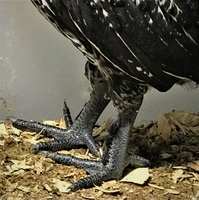goedric
Chirping
I was reading about the genetics of feathered legs ... and that there are dosage effects... was I could not figure out from surfing was that are feathered feet always associated with feathered shanks... or is there a genotype where the shanks have feathers but there is nothing on the feet?
I have 5 hatched silver hmong... from a fibro farms line.... 3 of the 5 have clean legs and feet... 2 have feathered shanks (front only) and no feathering on the feet whatsoever... so trying to get a grip on the genetics...
Sorry for being a noobie where but i did try to research it and could not find an answer.
Any insight appreciated.
Thx!
I have 5 hatched silver hmong... from a fibro farms line.... 3 of the 5 have clean legs and feet... 2 have feathered shanks (front only) and no feathering on the feet whatsoever... so trying to get a grip on the genetics...
Sorry for being a noobie where but i did try to research it and could not find an answer.
Any insight appreciated.
Thx!





 half a problem is better than a whole problem
half a problem is better than a whole problem